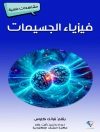This book provides for the first time an insider’s view into ITER, the biggest fusion reactor in the world, which is currently being constructed in southern France. Now in its second edition, it updates readers on all developments at ITER and those at competing fusion initiatives worldwide, at the National Ignition Facility (US), the Joint European Torus (EU) and the tens of start-ups funded by private ventures. The author also shares his personal experience with this unique big science project.
Aimed at bringing the “energy of the stars” to earth, ITER is funded by the major economic powers (China, the EU, India, Japan, Korea, Russia and the USA). Often presented as a “nuclear but green” energy source, fusion could play an important role in the future electricity supply. But as delays accumulate and budgets continue to grow, ITER is currently a star partially obscured by clouds.
Will ITER save humanity by providing a clean, safe and limitless source of energy, or is it merely a political showcase of cutting-edge technology? Is ITER merely an ambitious research project and partly a PR initiative driven by some politically connected scientists? In any case, ITER has already helped spur on rival projects in the USA, Canada and the UK. This book offers readers a behind-the-scenes look at this controversial project, which France snatched from Japan, and introduces them to a world of superlatives: with the largest magnets in the world, the biggest cryogenic plant and tremendous computing power, ITER is one of the most fascinating, and most international, scientific and technological endeavours of our time.
Table des matières
The Future of Energy.- What is Nuclear Fusion?.- A Brief History of Iter.- Why in France?.- Building A Gigantic Machine.- A Machine Manufactured in 35 Countries.- Those Who are Against Iter.- Why so Many Delays and Cost Overruns?.- How to Manage Such a Complex Programme?.- Is Iter Really Safe and Clean?.- Iter is Heating up the French Economy.- Will Fusion Become Commercial?.- Chinese in Provence.- How to Communicate a High-Tech Project?.- Quest for the Fusion Grail.- Beyond Technology Diplomacy.- New Technical Challenges.- Becoming a “Fusion Whistleblower”.- What is Next?.
A propos de l’auteur
Michel Claessens is a scientist and essayist. He was the head of communication and external relations of the ITER project from 2011 to 2016. His background is physical chemistry (Ph.D.) and science journalism. He joined the European Commission in 1994 where has been acting the head of the Communication Unit in the Research Directorate-General, spokesperson for research, editor-in-chief of the ‘research*eu’ magazine and in charge of the science and technology Eurobarometers until 2010. He is now an advisor to ITER’s Director General.
Michel is also teaching at the Free University of Brussels and has published a dozen of books and essays, including:
At the Human scale – International practices in science communication (avec Donghong Cheng, Jenni Metcalfe, Bernard Schiele, Toss Gascoigne et Shi Shunke), Science Press, 2006
Communicating European Research 2005 (M. Claessens editor), Springer, 2007
Communicating Science in Social Contexts (edited by D. Cheng, M. Claessens, T. Gascoigne, J. Metcalfe, B. Schiele, S. Shunke), Springer, 2008
Science communication in the world (Bernard Schiele, Michel Claessens and Shi Shunke editors), Springer, 2012












